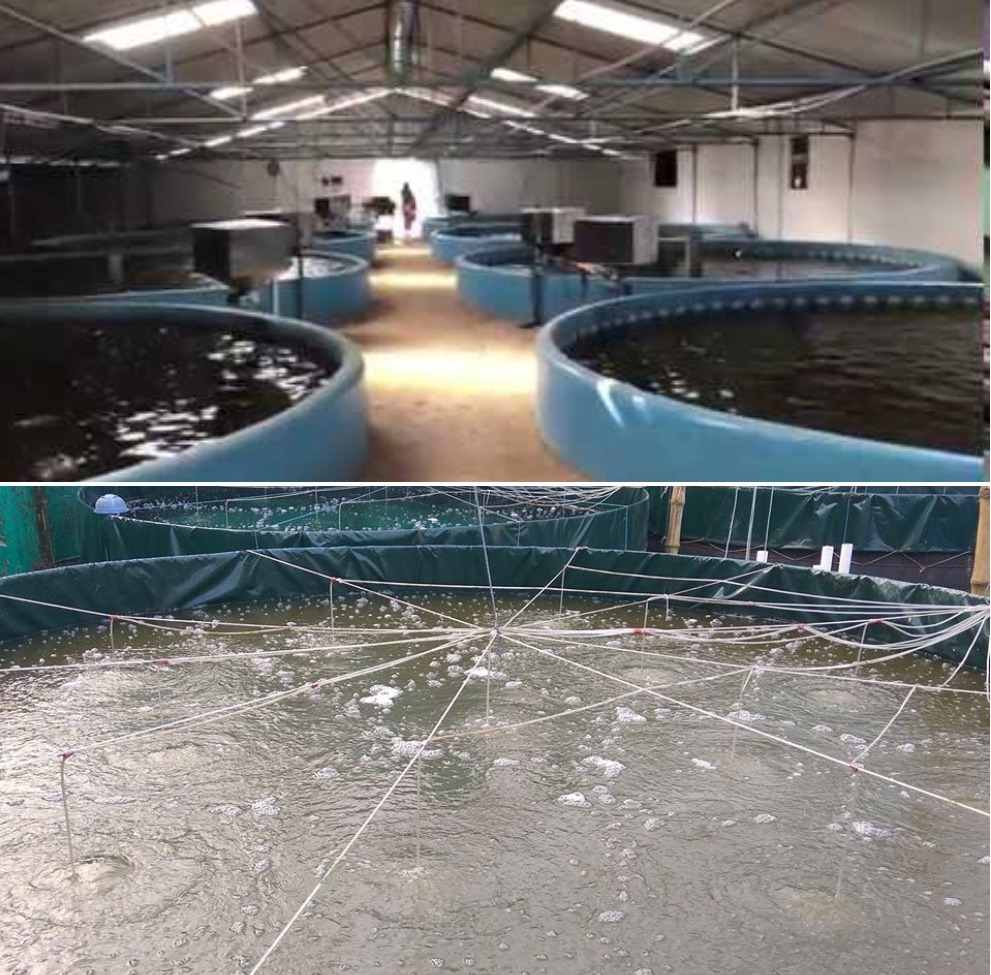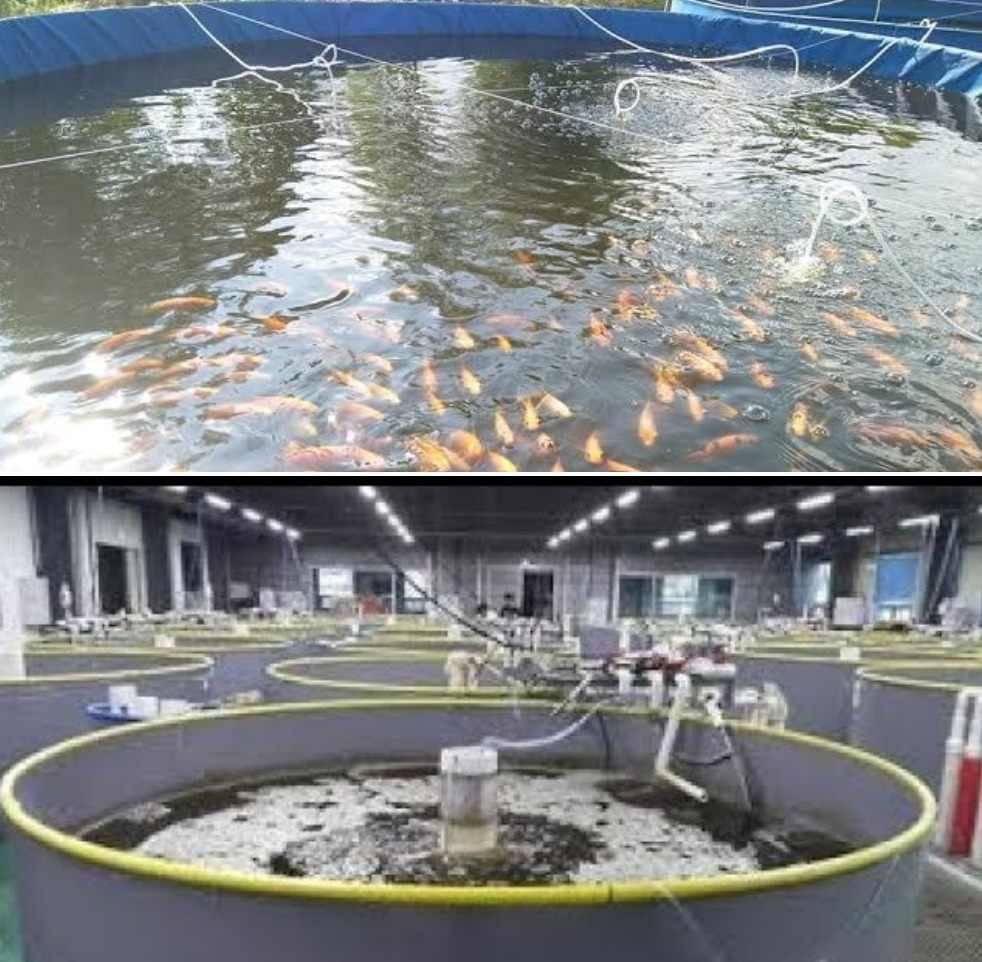Cost of Biofloc Fish Farming in India: Biofloc is a budget friendly innovative technology where the toxic materials such as nitrates ammonia, and nitrites are converted to a proteinaceous feed to the aquatic animals especially for fishes. The following information may be applied to the cost of murrel biofloc farming, rohu biofloc farming, catla biofloc farming, shrimp biofloc farming or prawn biofloc farming and tilapia biofloc fish famring cost.
A step by step guide to Cost of Biofloc Farming in India
This system is very unique and does not require any water change during the cultivation of fishes. This method of cultivation of fishes is very productive especially when the culture tanks are exposed to sun.
Why to use Biofloc system?
Biofloc system is mainly designed to control the aquatic environment especially during the commercial production. The main factors are feed cost where it costs around the 60% of the total cost of production, and the other limiting factors are land availability, permissions, and adequate water supply along with waste water treatment. But the Biofloc system is itself a waste water treatment system which makes it to gain the importance immediately as soon as it is into the market.
The main principle of this technique is nitrogen cycle, where it is maintained by the C:N ratio in higher amount by stimulating the microbial growth, that assimilates the nitrogenous waste which is harmful to the culture species as a feed. This C:N balance creates good nutrition to the aquatic animals as it encourages the microbial growth which acts as a feed to it.

This can be achieved by adding the molasses content as a carbon source to this and the toxic contents are cleared by the production of high quality single cell microbial protein. These microorganisms control the water quality by acting as a bioreactor controlling water quality and protein food sources.
You should not miss the How to Get Cold Storage License in India.
Which species can be grown through Biofloc system
This can be used for the aquatic species like shrimp farming because of its unique features like bottom dwelling and adapting to the changes in environment. To know more about its growth parameters one can assess the larval growth and reproductive performance shrimps and Nile tilapia fishes. In the Biofloc system you can observe the improved breeding performance.
Nutritional value in Biofloc system
Biofloc is a heterogeneous system of aggregate suspended particles along with a variety of microorganisms such as bacteria, fungi, algae, invertebrates and detritus, etc. It is a protein rich feed with live microbes as a feed which are formed on exposure to sunlight by converting the waste, unused feed and excreta of the culture species into a natural food. Now you may get a question in mind that how each floc is held? These flocs are held together by the loose matrix of the mucous secreted by the bacteria and are inturn bound by the electrostatic attraction of the filamentous bacteria. Usually these flocs are not visible and they are microscopic but few flocs are large enough which can be viewed with the naked eye.
The floc size ranges from 70-200 microns. These flocs have a good amount of nutritional value where the dry weight protein value ranges from 25-50%, fat content ranges from 0.5-15% and is also a valuable source of vitamins, minerals and especially the phosphorous content which is similar to the probiotics. This biofloc are dried and used as a major ingredient for fish meal instead of soybean in the feed. Compared to the other feed this feed from the biofloc has showed much improvement in the growth of the aquatic cultures.
Benefits of Biofloc culture system
There are many benefits in biofloc culture system where the major ones are listed below:
- Biofloc is an eco-friendly culture system which is not at all harmful to the environment.
- It reduces the environmental impact on the aquatic cultures.
- It also benefits by improving the land and water efficiency.
- Biofloc system does not require any water exchange. Hence, it forms the major impact for the farmers getting more attracted towards this system.
- Biofloc system resulted in higher productivity as it enhances the growth performance, feed conversion and survival rate in the fish culture system.
- Biofloc system resulted in higher biosecurity by reducing the nitrogenous waste.
- Biofloc system also reduces the water pollution and the risk of spreading of the pathogens.
- Biofloc system is a budget friendly and cost effective feed production which does not require much amount for feed cost.
- Biofloc system reduces the cost of protein rich feed and in turn the cost of standard feed which makes up to 60% of the total production cost.
You may also like How to Get Fish Farming License in India.
Disadvantages of Biofloc system

Apart from advantages biofloc system also has few disadvantages.
- Biofloc system requires startup period.
- Biofloc system requires alkalinity supplementation to maintain the pH in the water.
- It requires increased energy for mixing and aeration.
- It shows seasonal performance based on availability of sunlight as this system needs to get exposed to sunlight consistently.
Growth performance in Biofloc system
Growth performance of aquatic animals in biofloc system is analysed by the following parameters such as growth of fishes in terms of length and weight by measuring them at an interval of every 15 days. You can analyse by weighing 10 fishes from each treatment which replicates randomly. Fishes has to be starved overnight before checking the weight. The length of the fish is measured by using a measuring scale and the weight is measured by using electronic weighing balance.
The growth performance is analysed by using different formulas with the help of the parameters like specific growth rate-SGR, percentage of weight gained-PWG, feed conversion ratio-FCR, protein efficiency ratio-PER, biomass and survival rate. These formulas are listed below-
SGR (%) = Log e Final Weight of the fish –Log e Initial Weight of the fish/ Number of Days X 100
PWG (%) = Final Weight of the fish– Initial Weight/Initial Weight X 100
FCR = Feed dry weight (given)/Body weight gain of the fish (wet weight of the fishes)
PER = Body weight gain of the fish (wet weight)/crude protein feed
Survival rate (%) = Total Number of Harvested Animal from the fish culture/Total number of Stocked Animal X 100.
Requirements to setup for aquatic rearing in Biofloc system
This requires the following to setup a biofloc system for aquatic rearing. These includes-0.1 hectare of total area of land, culture pond with clear water in 45 days, Culture period for Biofloc system and earthern pond for 30 days, stocking rate per hectare should be 10 in number for 60 liters of water, survival rate in clear water is 60%, survival rate in earthen pond is 56% and compared to these the survival rate in Biofloc is 80%.
Incase if you miss this: Solar Drip Irrigation System Benefits.
Growth parameters considered before rearing fishes in Biofloc system
These parameters are listed below-
- Temperature should be maintained between 28.6 ±0.15oC
- pH should be maintained between 8.04 ±0.02
- Dissolved oxygen levels should be 5.63±0.11 mg/l
- Alkalinity should be 210±0.76
- Ammonia content in the water should be 0.15±0.03 mg/l
- Nitrite levels should be maintained 1.15±0.19 mg/l
- Nitrate levels should be maintained at 11.50±2.06 mg/l
- Floc volume should be between 14.17±2.20 mg/l
Economic analysis of Biofloc system in rearing of Chanoschanos (Milkfish)
Note: This can be applied even for the cost of tilapia biofloc fish farming.
The economic evaluation for rearing of the Biofloc system includes the following-
Cost of the fish that will be reared in the Biofloc system, for 16,00,000 pieces (50 paise per piece) – Rs. 80,000
Cost of feed in Biofloc system – Rs. 10,000
Cost of manures used- ‘0’ as there is no requirement for manures.
In chemical sources only Ammonium sulphate is used – Rs. 1,000
Cost of the carbon source used – Rs. 6,000
Labour charges – Rs. 8,000
Harvesting charges – Rs. 1,000
Miscillaneous charges are a bit high in the Biofloc system as it consumes more energy for mixing and aeration – Rs. 50,000
Total costs involved to set up Biofloc system – Rs. 1,56,000
By this you can understand that the Biofloc system in rearing the milk fish earns more profits as the investment is less compared to other fish farming methods that too in a very less space that is 0.1 hectare.
That’s all folks about biofloc fish farming cost in India. You might be interested in Sheep Farming Basics, Feeding, Breeding, Housing.
Am from Ghana in West Africa and I want to enter into fish famingn
Please can you give the total cost of biofloc setup in US dollar
Will it be possible to export to my country
a) Can you please send me the actual and current set-up cost for a 2m and 3m diameter tank
b) May I know if the cost of feed is included in the set up cost.
If not,how much feed will be needed from seeding to harvest?
c) Where can I have access to all the needed resources to start the project?
d) Is there any technical team to help in the set up and supervise till the first harvest is done?
e) I am in Agona-Swedru, Ghana.
Where is the nearest biofloc fish farm for my observation.
Thank you.